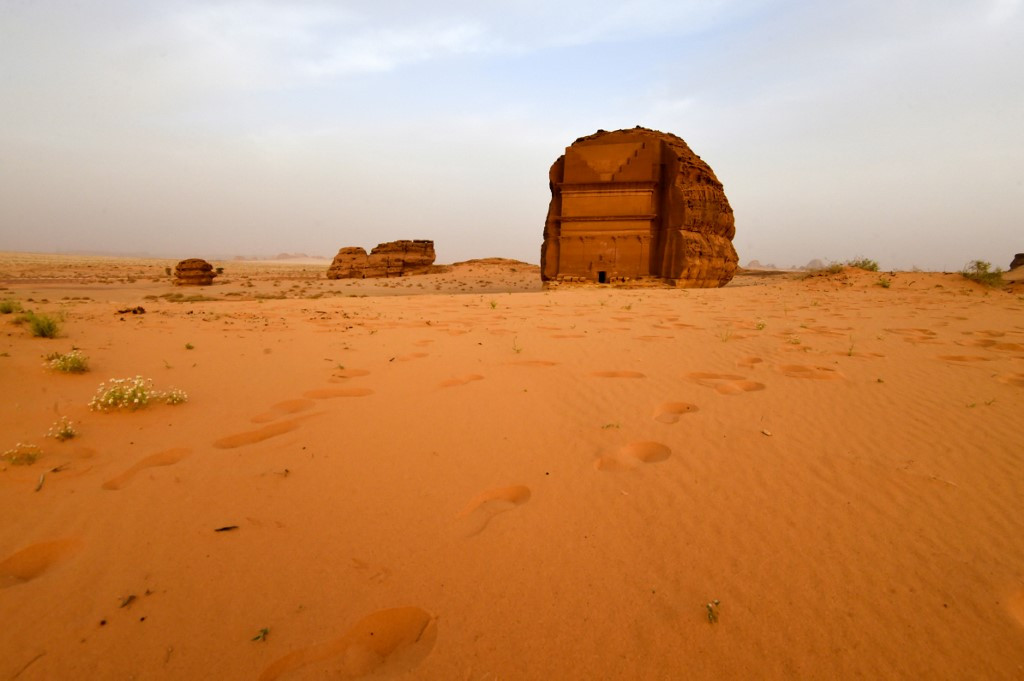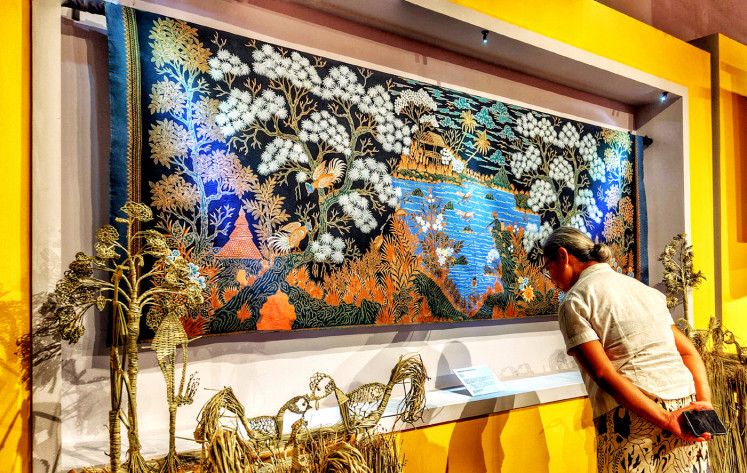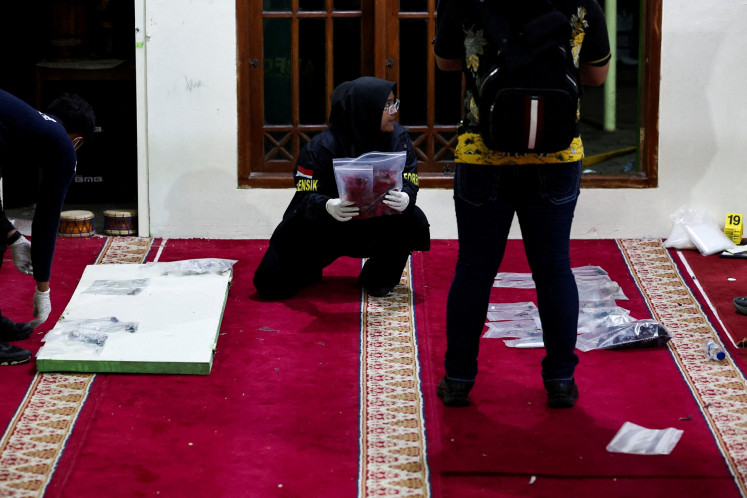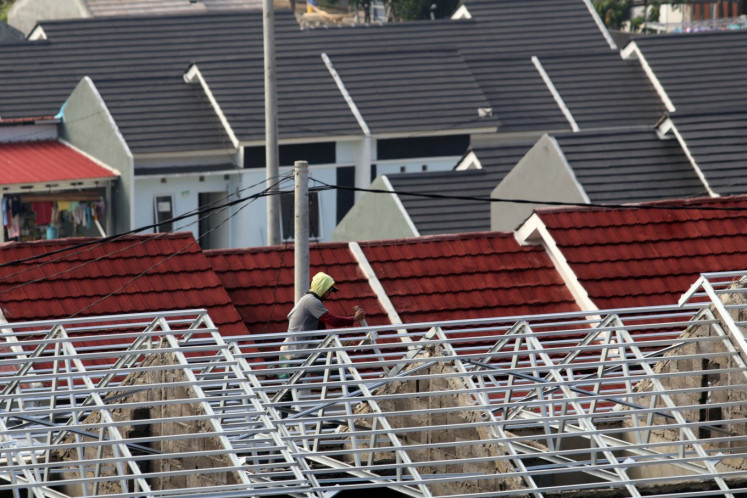Popular Reads
Top Results
Can't find what you're looking for?
View all search resultsPopular Reads
Top Results
Can't find what you're looking for?
View all search resultsSixth Saudi site makes UNESCO heritage list
Hima, in the Gulf state's southwest, is home to one of the largest rock art complexes in the world.
Change text size
Gift Premium Articles
to Anyone
 A picture taken on April 1, 2018 shows a view of the Qasr al-Farid tomb (The Lonely Castle) carved into rose-coloured sandstone in Madain Saleh, a UNESCO World Heritage site, near Saudi Arabia's northwestern town of al-Ula. Al-Ula, an area rich in archaeological remnants, is seen as a jewel in the crown of future Saudi attractions as the austere kingdom prepares to issue tourist visas for the first time -- opening up one of the last frontiers of global tourism. Saudi Crown Prince Mohammed bin Salman is set to sign a landmark agreement with Paris on April 10, 2018 for the touristic and cultural development of the northwestern site, once a crossroads of ancient civilisations. (AFP/Fayez Nureldine)
A picture taken on April 1, 2018 shows a view of the Qasr al-Farid tomb (The Lonely Castle) carved into rose-coloured sandstone in Madain Saleh, a UNESCO World Heritage site, near Saudi Arabia's northwestern town of al-Ula. Al-Ula, an area rich in archaeological remnants, is seen as a jewel in the crown of future Saudi attractions as the austere kingdom prepares to issue tourist visas for the first time -- opening up one of the last frontiers of global tourism. Saudi Crown Prince Mohammed bin Salman is set to sign a landmark agreement with Paris on April 10, 2018 for the touristic and cultural development of the northwestern site, once a crossroads of ancient civilisations. (AFP/Fayez Nureldine)
A sixth site in Saudi Arabia has been added to UNESCO's world heritage list, the UN organisation announced on Saturday.
Hima, in the Gulf state's southwest, is home to one of the largest rock art complexes in the world.
"New site inscribed on the UNESCO World Heritage List: cultural area of Hima, Saudi Arabia. Mabrouk (congratulations)!" UNESCO announced.
Hima features more than 34 separate sites including rock inscriptions and wells along the route of the ancient Arabian caravans.
Prince Badr bin Abdullah bin Farhan Al Saud, the Saudi culture minister, welcomed the listing, the official SPA news agency reported.
The kingdom has a "rich heritage (of) human civilisations. Efforts have borne fruit in making it known to the world," it quoted him as saying.
SPA said Hima was a conduit for caravans on the trade and hajj routes to and from the southern parts of Arabia.
"People who passed through the area between pre- and post-historic times have left behind a substantial collection of rock art depicting hunting, wildlife, plants, symbols, and tools used at the time, as well as thousands of inscriptions," the news agency said.
The site covers 557 square kilometres (215 square miles).
SPA said the wells in the area are more than 3,000 years old and were considered a vital source of fresh water in the vast desert of Najran province.
"They still serve fresh water to this day," it added.
Other UNESCO sites in Saudi Arabia include rock art in the Hail region and historic Jeddah.
In 2019, Riyadh announced that for the first time it would grant tourist visas for those wishing to visit Saudi Arabia.
Previously, the country was open only to businessmen and Muslim pilgrims visiting the holy cities of Mecca and Medina.










